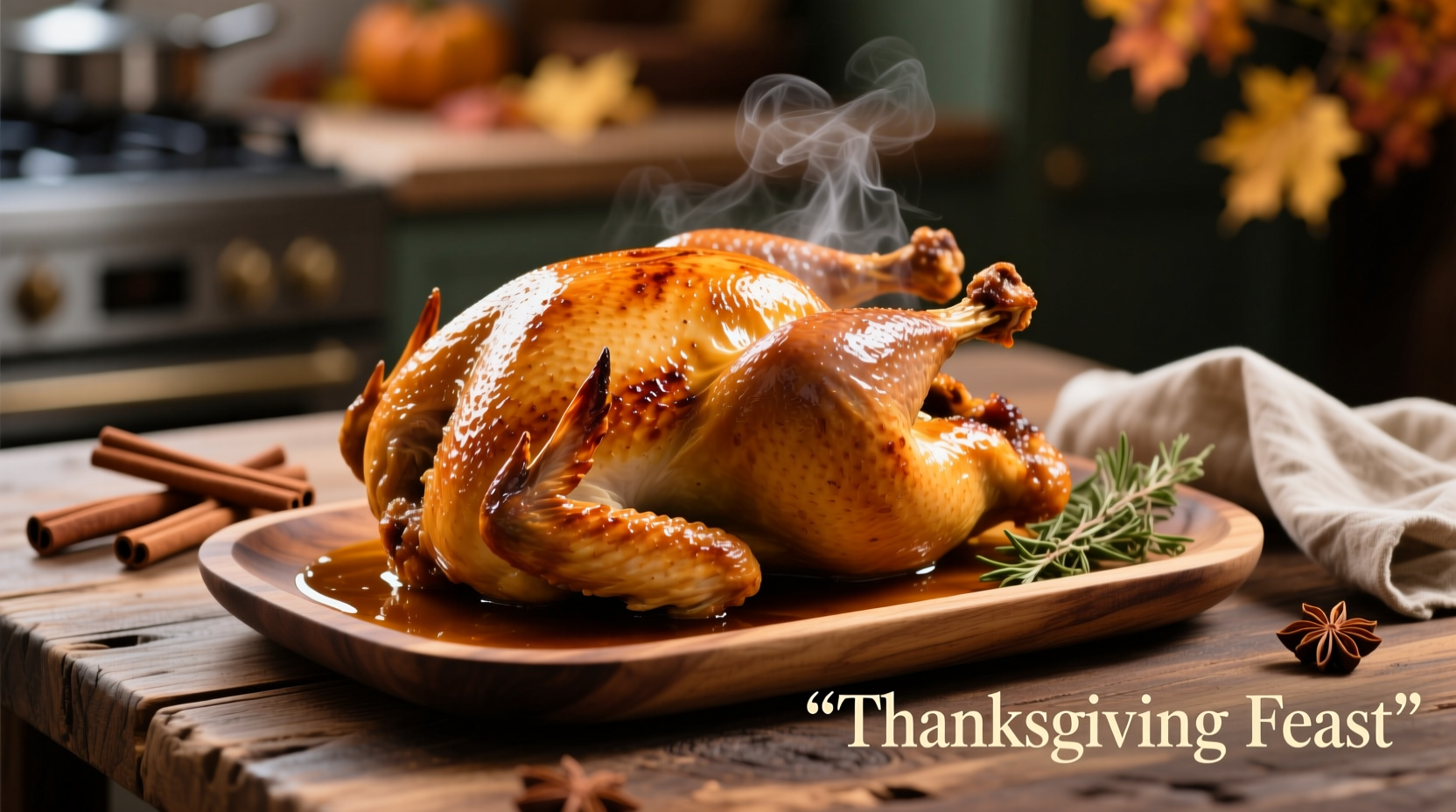Planning your holiday centerpiece? Getting the cooking time right for a 16-pound turkey makes all the difference between a succulent showstopper and a dry disappointment. As a culinary professional with decades of experience preparing holiday feasts, I've perfected the timing formula that guarantees perfect results every time. This guide delivers the exact cooking parameters you need, backed by USDA food safety standards and professional kitchen techniques.
Why Time Alone Isn't Enough: The Temperature Truth
While time provides a useful estimate, your meat thermometer is the real authority in turkey preparation. The USDA Food Safety and Inspection Service confirms that turkey must reach 165°F in the breast and 175°F in the thighs to eliminate harmful bacteria. Relying solely on cooking time risks either undercooked poultry or overcooked, dry meat.
| Weight (lbs) | Unstuffed Time (325°F) | Stuffed Time (325°F) | Minimum Internal Temp |
|---|---|---|---|
| 12-14 | 3-3¾ hours | 3¼-4 hours | 165°F breast, 175°F thighs |
| 14-16 | 3¾-4¼ hours | 4-4½ hours | 165°F breast, 175°F thighs |
| 16-20 | 4¼-4¾ hours | 4½-5 hours | 165°F breast, 175°F thighs |
Your Step-by-Step Cooking Timeline
Follow this professional-tested sequence for flawless results:
Preparation Phase (1 hour before cooking)
- Remove turkey from refrigerator 60 minutes before roasting for even cooking
- Pat skin completely dry with paper towels (critical for crispy skin)
- Apply oil or butter mixture to skin, not under the skin
- Place on rack in roasting pan with 2 cups of liquid (water, broth, or wine)
Cooking Phase (3½-4 hours)

Set oven to 325°F with rack in the lower third position. Insert thermometer into thickest part of breast, avoiding bone. Baste every 45-60 minutes with pan juices. After 2½ hours, check temperature hourly. When breast approaches 155°F, cover breast area loosely with foil to prevent overcooking.
Temperature Verification (Critical Step)
At the 3½ hour mark, verify temperatures in three locations:
- Thickest part of breast (must reach 165°F)
- Innermost part of thigh (must reach 175°F)
- Center of stuffing if used (must reach 165°F)
Context Boundaries: When Standard Timing Doesn't Apply
These guidelines assume standard conditions. Adjust when:
- Convection ovens: Reduce time by 25% and lower temperature by 25°F
- Deep-frying: Cooks in approximately 45-55 minutes (3-4 minutes per pound)
- Grilling: Requires indirect heat and 10-15% longer cooking time
- Brined turkeys: May cook slightly faster due to altered protein structure
The Essential Resting Period
Never skip this crucial step! After removing turkey from oven:
- Transfer to carving board and tent loosely with foil
- Rest for 20-30 minutes (essential for juicy meat)
- Internal temperature will continue rising 5-10°F during resting
- Juices redistribute throughout the meat during this time
Troubleshooting Common Issues
Turkey cooking too fast? Lower oven temperature by 25°F and check frequently.
Turkey not browning evenly? Rotate pan 180 degrees halfway through cooking.
Thighs done before breast? Cover breast with foil earlier and extend cooking time.
Unexpected delay? Once turkey reaches 160°F, you can hold it safely at 140°F for up to 2 hours.
Professional Tips for Perfect Results
Butterball's Turkey Talk Line recommends these pro techniques:
- Place turkey breast-side down for first hour, then flip for even cooking
- Use a remote digital thermometer for continuous monitoring
- Add aromatics like onions and herbs to the cavity for subtle flavor
- Let turkey rest under a loose foil tent—never seal tightly
Frequently Asked Questions
Can I cook a 16-pound turkey at 350°F instead of 325°F?
Yes, but reduce cooking time to approximately 3¼-3¾ hours. Higher temperatures risk drying the breast meat before thighs reach safe temperature. The USDA recommends 325°F as the optimal balance between food safety and moisture retention.
How do I know when my turkey is done without a thermometer?
While a thermometer is essential for food safety, visual cues include clear juices when pierced, easily moved leg joints, and meat that's no longer pink. However, these methods are unreliable—USDA research shows color alone doesn't indicate safety. Always verify with a calibrated thermometer.
Should I stuff my 16-pound turkey?
FoodSafety.gov advises against stuffing turkeys for food safety reasons. Stuffed turkeys require 45-60 minutes longer cooking time, increasing dryness risk. Cook stuffing separately for better texture and safety—your turkey will reach proper temperature faster and stay juicier.
Why does my turkey always turn out dry?
Dry turkey usually results from overcooking. Breast meat becomes dry at 170°F—remove turkey when breast reaches 160°F (it will rise to 165°F during resting). Also ensure proper resting time (20-30 minutes) before carving, which allows juices to redistribute throughout the meat.











 浙公网安备
33010002000092号
浙公网安备
33010002000092号 浙B2-20120091-4
浙B2-20120091-4